Dogs are renowned for their loyalty, playfulness, and, at times, their abundant drool. But how do you discern between the harmless dribble of excitement and a drool that signals an underlying issue? Understanding the nuances of dog drooling is crucial for every pet owner. This comprehensive guide aims to unravel the mysteries of canine drool, helping you distinguish between normal occurrences and potential concerns.
Contents Overview
Dog drooling is a fascinating yet common phenomenon that captures the attention of dog owners worldwide. While it may seem messy or inconvenient at times, drooling serves several essential purposes in a dog’s life. Primarily, drooling aids in heat regulation, allowing dogs to cool down by evaporating moisture from their mouths through panting. Additionally, drooling can be a sign of excitement, anticipation, or even contentment, as dogs often drool when they’re looking forward to mealtime, treats, or engaging activities. However, not all drooling is benign, and excessive or sudden changes in drooling patterns can signal underlying health issues that require attention. By understanding the nuances of dog drooling, pet owners can better differentiate between normal occurrences and concerning signs, ensuring the health and well-being of their beloved canine companions.
Reasons of Dog Drooling
Dogs drool for various reasons, ranging from normal physiological responses to underlying health issues. Understanding why dogs drool can help pet owners discern between harmless occurrences and potential concerns. Here are the primary reasons why dogs drool:
Excitement and Anticipation
Dogs often drool when they’re excited or anticipating something enjoyable, such as mealtime, treats, or going for a walk. This is a natural response and is typically not a cause for concern.Heat Regulation
Panting, which accompanies drooling, helps dogs regulate their body temperature, especially in hot weather or after physical exertion. This is the body’s way of cooling down.Breed Predisposition
Certain dog breeds, such as Saint Bernards, Bulldogs, and Mastiffs, are genetically predisposed to drooling more than others due to their loose lip and jowl structure.Dental Issues
Poor dental hygiene or dental problems such as gum disease, tooth decay, or oral infections can cause increased drooling in dogs. This is often accompanied by other symptoms like bad breath or reluctance to eat.Nausea or Illness
Dogs may drool excessively when they feel nauseous or are experiencing gastrointestinal issues. This could be due to ingestion of something toxic, digestive problems, or underlying medical conditions.Oral Injuries or Irritation
Injuries or irritations to the mouth, throat, or tongue can cause dogs to drool more than usual. This may include cuts, burns, foreign objects stuck in the mouth, or inflammation.Motion Sickness
Some dogs may drool excessively when they’re in a moving vehicle or experiencing motion sickness. This is often accompanied by other signs of discomfort such as vomiting or restlessness.Stress or Anxiety
Dogs may drool more than usual when they’re stressed, anxious, or fearful. This could be triggered by various factors such as loud noises, unfamiliar environments, or separation from their owners.Medical Conditions
Certain medical conditions or diseases, such as rabies, distemper, or neurological disorders, can cause excessive drooling in dogs. These conditions typically require prompt veterinary attention.Medications
Some medications may have side effects that cause increased salivation or drooling in dogs. It’s essential to be aware of these potential side effects and consult with a veterinarian if they become problematic.
Understanding the reasons behind your dog’s drooling can help you determine whether it’s normal or if it requires further investigation or veterinary care. If you notice sudden or excessive drooling accompanied by other concerning symptoms, it’s essential to consult with a veterinarian for proper evaluation and treatment.
Normal Drooling
Normal drooling in dogs is a natural physiological response that serves various purposes. Here are some common scenarios where drooling is considered normal:
Excitement and Anticipation
Dogs often drool when they are excited or anticipating something enjoyable, such as mealtime, treats, or going for a walk. This is a natural response to stimulation and is typically harmless.Heat Regulation
Panting, which accompanies drooling, helps dogs regulate their body temperature, especially in warm weather or after physical exertion. Drooling assists in cooling down their bodies by evaporating moisture from their mouths.Breed Predisposition
Certain breeds, such as Saint Bernards, Bulldogs, and Mastiffs, are genetically predisposed to drool more than others due to their loose lip and jowl structure. This type of drooling is considered normal for these breeds and is not typically a cause for concern.Dental Health
Some drooling may be related to oral hygiene or dental health. Dogs may drool more than usual when they are teething, experiencing gum irritation, or have dental issues such as tartar buildup or periodontal disease. Regular dental care can help maintain oral health and reduce drooling associated with dental problems.Tasting and Eating
Dogs may drool when they encounter food or tasty smells. This is a natural response to stimulate the production of saliva, which aids in digestion by moistening food and facilitating swallowing.Play and Exercise
During play or vigorous exercise, dogs may drool due to increased physical activity and panting. This helps regulate their body temperature and keep them cool during exertion.Social Interaction
Some dogs may drool when engaging in social interactions, such as greeting their owners or other dogs. This could be a sign of excitement or happiness and is considered a normal behavior in many cases.Sleeping Position
Dogs may drool while sleeping, especially if they are lying in a position that causes their saliva to pool around their mouths. This is typically harmless and may indicate deep relaxation during sleep.
Understanding when drooling is a normal part of your dog’s behavior can help distinguish it from situations where drooling may indicate a potential health concern. If you’re unsure about your dog’s drooling behavior or notice any sudden changes or accompanying symptoms, it’s always best to consult with a veterinarian for proper evaluation and advice.
Concerning Drooling
While some drooling in dogs is normal, excessive or sudden changes in drooling patterns can indicate underlying health issues that require attention. Here are some concerning reasons for dog drooling:
Excessive Drooling
If your dog is drooling significantly more than usual and there’s no apparent reason such as excitement or heat, it could signal an underlying health problem. Excessive drooling, also known as ptyalism, may be caused by various issues such as nausea, oral injuries, mouth ulcers, or poisoning.Foamy or Discolored Saliva
Foamy or discolored saliva may indicate the presence of foreign objects in the mouth, oral infections, or diseases. Discoloration could be due to blood, pus, or the ingestion of toxic substances. If you notice any changes in the color or consistency of your dog’s saliva, it’s essential to investigate further.Difficulty Swallowing
If your dog appears to have difficulty swallowing accompanied by increased drooling, it could signify an obstruction or throat issue. This may be caused by foreign objects lodged in the throat, tumors, or inflammation of the esophagus.Changes in Behavior
Sudden changes in drooling behavior, such as drooling when your dog doesn’t typically drool or excessive drooling accompanied by other concerning symptoms, may indicate illness or injury. Keep an eye out for signs of lethargy, vomiting, diarrhea, loss of appetite, or reluctance to eat or drink.Oral Discomfort or Injury
Dogs may drool excessively if they have oral discomfort or injuries such as cuts, burns, or mouth ulcers. Injuries to the mouth, gums, tongue, or teeth can cause pain and inflammation, leading to increased drooling.Toxic Ingestion
Ingestion of toxic substances such as certain plants, chemicals, medications, or household cleaners can cause drooling in dogs. If you suspect your dog has ingested something toxic, seek veterinary care immediately.Dental Problems
Dental issues such as broken teeth, gum disease, or oral infections can cause discomfort and increased drooling in dogs. Regular dental check-ups and proper oral hygiene are essential for preventing dental problems that may lead to excessive drooling.Systemic Diseases
Certain systemic diseases or medical conditions such as kidney disease, liver disease, diabetes, or neurological disorders can cause changes in drooling patterns. These conditions may require comprehensive medical evaluation and treatment by a veterinarian.
If you notice any concerning signs or symptoms of drooling in your dog, it’s crucial to consult with a veterinarian for proper diagnosis and treatment. Early detection and intervention can help address underlying health issues and ensure the well-being of your furry friend.
When to Consult a Veterinarian
Knowing when to consult a veterinarian about your dog’s drooling is essential for maintaining their health and well-being. Here are some situations where it’s advisable to seek veterinary care:
Persistent or Excessive Drooling
If your dog is drooling significantly more than usual, or if the drooling persists for an extended period without an apparent cause, it’s essential to consult a veterinarian. Excessive drooling, also known as ptyalism, can indicate underlying health issues that require investigation and treatment.Sudden Changes in Drooling Patterns
If your dog suddenly starts drooling excessively or exhibits changes in drooling behavior, such as drooling when they don’t typically drool, it may indicate an underlying problem. Sudden changes in drooling patterns should be evaluated by a veterinarian to determine the cause and appropriate course of action.Drooling Accompanied by Other Symptoms
If your dog’s drooling is accompanied by other concerning symptoms such as vomiting, diarrhea, lethargy, loss of appetite, difficulty breathing, or changes in behavior, it could indicate a more serious underlying condition. In such cases, prompt veterinary attention is necessary to diagnose and treat the underlying cause.Ingestion of Toxic Substances
If you suspect that your dog has ingested something toxic, such as certain plants, chemicals, medications, or household cleaners, it’s crucial to seek immediate veterinary care. Toxic ingestion can cause drooling along with other symptoms such as vomiting, diarrhea, weakness, seizures, or collapse, and requires prompt treatment to prevent further complications.Signs of Oral Discomfort or Injury
If your dog exhibits signs of oral discomfort or injury, such as pawing at the mouth, reluctance to eat or drink, bleeding gums, or visible wounds in the mouth, it’s important to have them examined by a veterinarian. Oral injuries or dental problems can cause pain and discomfort, leading to increased drooling and other issues if left untreated.Concerns About Overall Health
If you have any concerns about your dog’s overall health or well-being, including their drooling behavior, it’s advisable to schedule a veterinary appointment for a thorough examination. A veterinarian can assess your dog’s health, perform diagnostic tests if necessary, and provide recommendations for appropriate care and management.
Remember that early detection and intervention are key to addressing potential health problems and ensuring the best possible outcome for your dog. If you’re unsure whether your dog’s drooling warrants veterinary attention, it’s always better to err on the side of caution and consult with a veterinarian for guidance.
Managing Dog Drooling
Managing dog drooling involves a combination of preventive measures, regular care, and addressing underlying health issues when necessary. Here are some tips for managing dog drooling:
Regular Dental Care
Maintain your dog’s oral hygiene by brushing their teeth regularly with a dog-specific toothbrush and toothpaste. This helps prevent dental issues such as tartar buildup, gum disease, and oral infections that can contribute to excessive drooling.Provide Chew Toys
Offering your dog appropriate chew toys can help promote dental health and reduce drooling by encouraging chewing, which helps clean teeth and massage gums.Address Dental Problems Promptly
If you notice signs of dental issues such as bad breath, swollen gums, or reluctance to eat, consult your veterinarian promptly for a dental examination and appropriate treatment.Hydration and Nutrition
Ensure your dog has access to clean, fresh water at all times to prevent dehydration and support overall health. Feed your dog a balanced diet that meets their nutritional needs, and consider choosing high-quality dog food to promote optimal health and reduce drooling associated with poor diet.Environmental Considerations
Keep your dog cool and comfortable, especially during hot weather, to minimize excessive drooling related to heat regulation. Provide shade, plenty of water, and avoid excessive physical activity during the hottest parts of the day.Training and Socialization
Teach your dog commands such as “leave it” or “settle” to manage excitement-induced drooling, particularly during mealtime or when encountering stimulating situations. Socialize your dog from a young age to reduce stress-related drooling in unfamiliar or challenging environments.Regular Veterinary Check-ups
Schedule regular veterinary check-ups for your dog to monitor their overall health and detect any potential issues early. Your veterinarian can provide recommendations for preventive care, including dental cleanings, vaccinations, and parasite control, to help maintain your dog’s well-being and reduce drooling associated with underlying health problems.Monitor for Changes
Keep an eye on your dog’s drooling behavior and watch for any sudden changes or concerning signs such as excessive drooling, foamy or discolored saliva, difficulty swallowing, or changes in behavior. If you notice any abnormalities, consult your veterinarian for a thorough evaluation and appropriate treatment.
By incorporating these strategies into your dog’s routine care and lifestyle, you can help manage drooling and promote their overall health and well-being. If you have specific concerns about your dog’s drooling or need personalized recommendations, don’t hesitate to consult with your veterinarian for guidance.
Bottom Line
Understanding the intricacies of dog drooling is pivotal for responsible pet ownership. While some drooling is part of a dog’s natural behavior, discerning between normal occurrences and potential health concerns is crucial. By staying vigilant and seeking veterinary care when necessary, you can ensure your furry companion stays happy, healthy, and drool-free.
Key Takeaways
Normal Drooling
Understand that some drooling in dogs is entirely normal and can occur in response to excitement, heat regulation, breed predisposition, dental health, and other benign factors.Concerning Signs
Be aware of concerning signs of drooling in dogs, including excessive drooling without apparent cause, foamy or discolored saliva, difficulty swallowing, changes in behavior, oral discomfort or injury, and ingestion of toxic substances.When to Consult a Veterinarian
Know when to seek veterinary care for your dog’s drooling, such as persistent or sudden changes in drooling patterns, drooling accompanied by other concerning symptoms, ingestion of toxic substances, signs of oral discomfort or injury, or concerns about overall health.Managing Dog Drooling
Implement preventive measures such as regular dental care, providing chew toys, ensuring proper hydration and nutrition, considering environmental factors, training and socialization, scheduling regular veterinary check-ups, and monitoring for changes in drooling behavior.Early Detection and Intervention
Understand the importance of early detection and intervention in managing dog drooling and addressing potential underlying health issues to ensure the well-being of your furry friend.Consulting a Veterinarian
If you’re unsure about your dog’s drooling behavior or notice any concerning signs, don’t hesitate to consult with a veterinarian for proper evaluation, diagnosis, and treatment tailored to your dog’s specific needs.
By being proactive in understanding and managing your dog’s drooling, you can help maintain their health and happiness while ensuring peace of mind for yourself as a responsible pet owner.

Ryan Farmer, DVM, is a veterinarian based in Houston, Texas. He earned his Doctor of Veterinary Medicine from the University of Missouri-Columbia and is the owner of EaDo Veterinary Clinic.



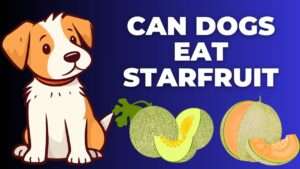




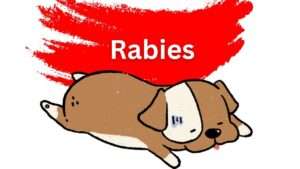

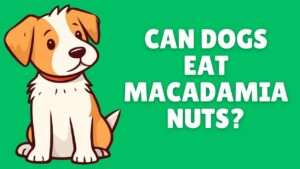





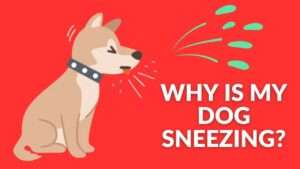

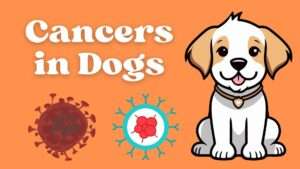



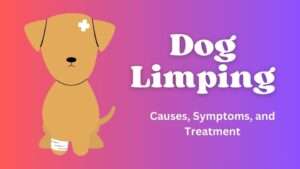


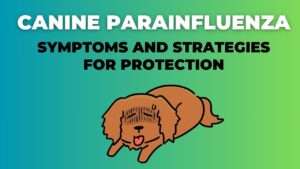







+ There are no comments
Add yours